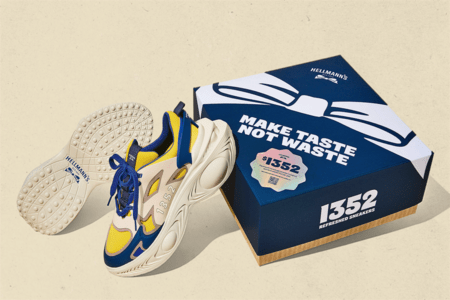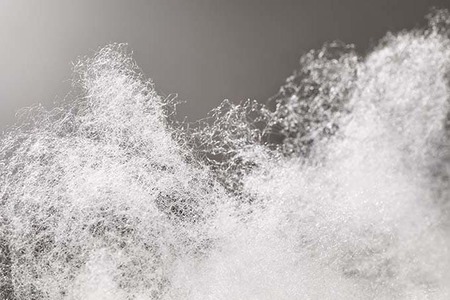Indonesian TPT industry faces pressure from both inside and outside the country
YarnsandFibers News Bureau 2015-07-31 11:00:00 – JakartaIndonesian textiles and textile products (TPT) industry in Indonesia is presently facing tough pressure from both inside and outside the country. The performance of the TPT industry over the first quarter of 2015 was relatively poor, suffering a contraction with negative growth of 0.98 percent year-on-year, making it a worse performer than the manufacturing industry, which saw growth of 3.87 percent, and Indonesia’s Gross Domestic Product (GDP), which saw growth of 4.71 percent. The decline in TPT exports was already seen in the first quarter of 2015 at just US$2.3 billion, lower year-on-year by $2.5 billion and is predicted to stagnate for the remainder of year.
In the domestic market, slowing economic growth, which is expected to continue throughout the year, has led to a decline in the people’s purchasing power causing lower demand for textile products.
The declining demand in the local market, accompanied by increased production costs and more intense competition, has caused manufacturers to reduce their production capacities. Meanwhile, the export market is weak nowadays due to low economic growth also being experienced in Indonesia’s export destinations.
According to the chairman of the Indonesian Textile Association (API), Ade Sudrajat, the TPT export target this year has been set at the same figure that was realized last year, $12.6 billion. TPT exports as of the first quarter of 2015 had only reached 18.3 percent of this target.
The value of total sales in Indonesia’s TPT industry has averaged around $20 billion over the last three years. Exports account for roughly 63 percent of this figure. Given the large share being contributed by exports, the performance of the TPT industry is sure to be greatly influenced by global economic conditions, particularly in the US and Europe, which represent Indonesia’s largest TPT export markets.
In 2015, the US economy is expected to improve. However, its impact on the recovery of Indonesian TPT exports will not be immediately significant and perhaps won’t be felt this year.
In addition, Indonesian TPT exports are also facing various domestic constraints such as, the length of the loading and unloading process at ports, known as dwelling time. Another constraint is the paucity of free trade agreements in place with key export destinations, such as the US and the EU, with whom Indonesia’s major textiles competitors, such as Vietnam and Malaysia, already have free trade agreements.
Furthermore, almost 60 percent of the total value of TPT exports comes from garments. These products use the Harmonized System (HS) for product classification and fall into chapter 61 (knitted and crocheted apparel and accessories), 62 (other apparel and accessories) and 63 (other textile articles, sets and used clothing). By country/region of destination, the largest market for Indonesian TPT exports is the US, which accounts for 31.08 percent, followed by the EU with 16.02 percent, Japan on 9.60 percent, Turkey on 5.10 percent and ASEAN on 6.90 percent. The majority of Indonesian TPT exports to the United States in 2014 fell within HS chapters 61 and 62, which accounted for 47.07 percent and 46.65 percent respectively. Indonesian TPT exports to the EU in the same period were overall less focused on these two chapters, and also more weighted toward chapter 62 goods, which formed 41.67 percent of exports to the EU, with chapter 61 forming 31.84 percent.
In the domestic market, an obstacle facing the Indonesian TPT industry comes from the influx of imported products into the country, particularly those from China and Korea. Over the last five years, the average value of Indonesian TPT imports has grown by 12.45 percent. Another obstacle is that rising energy prices early this year, affecting fuel and electricity, have caused soaring costs in the TPT industry. This increasingly reduces the competitiveness of Indonesian TPT products in the domestic market where imported products could be up to 20 percent cheaper.
In the first quarter of 2015, the value of TPT imports reached $2 billion, nearly a half of this year’s import target of $5 billion. In 2014, the greatest portion of Indonesia’s TPT imports, 32.88 percent, came from China, followed by Korea, accounting for 17.81 percent and ASEAN, accounting for 10.41 percent. Most of Indonesia’s TPT imports — about 94.24 percent — comprised goods in HS chapters 50 to 60.
HS chapters 60 to 63, which refer to garments and form most of Indonesia’s TPT exports, accounted for only 5.76 percent of imports. The issuance by the minister of finance of Regulation No. 132/PMK.010/2015 constitutes one of the government’s efforts to reduce the influx of imports, including by raising import tariffs for some TPT products. Most of the TPT products affected by such increases are garments under HS chapter 61, specifically men’s and boys’ overcoats, the tariff for which rose from 15 percent to 25 percent.
Fluctuation in the prices of raw materials such as cotton due to the rupiah depreciation against the US dollar is also still prevalent. To date, most cotton — approximately 95 percent of which is used in the TPT industry — still has to be imported as the quality of domestic cotton is far below standard and there are no guarantees of its supply to the TPT industry.
The rupiah depreciation causing fluctuations in the price of raw materials has further contributed to industry problems, becoming a major concern. Aside from price fluctuations, supply channels for the procurement of cotton also represent a hindrance. The procurement of cotton is largely done through intermediaries. This means that TPT industry players have to buy cotton from brokers at high prices.
According to the secretary general of API, cotton import procurement patterns in Indonesia show that about 60 percent comes from abroad, with 30 percent from warehouses in Malaysia and the other 10 percent from retailers who import the material only to sell it on again. The length of the cotton import chain means the price of this vital raw material for textiles is higher when it arrives at the end user.
In light of this, API is urging that the relocation of cotton from warehouses in Malaysia to warehouses in Indonesia be carried out immediately so that logistical costs, especially transportation and warehousing costs, can be reduced. The API’s wishes in this regard seem to be in line with the priority program of the Industry Ministry that aims to build a bufferstock for the TPT industry.
The Industry Ministry is encouraging the TPT industries to spur on export sales. To that end, the ministry is providing various stimuli and incentives. First, it is offering additional incentives including the easing of obtaining raw materials for textiles and textile products through the lowering of government-borne duties (BMDTP) for importing some industrial materials. Second, it is providing ease of access to financing as mandated by Act No. 3/2014 regarding industry. Third, it is developing a buffer stock for the cotton industry.
Fourth, it is undertaking inter-ministerial coordination in order to promote domestic trade. Fifth, it is carrying out efforts that directly promote exports. In this regard, the ministry plans to open up opportunities for cooperation in the form of free trade agreements (FTA) with countries that buy Indonesian garments.
Market Intelligence
Ask for free sample Report

experience
Customer Base
dedicated team
Countries Served Worldwide




![Freitag unveils new Mono[P6] circular backpack](https://www.yarnsandfibers.com/wp-content/uploads/2024/04/Freitag.jpg)




